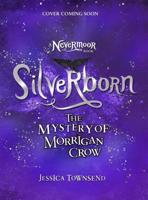Publisher's Synopsis
This historic book may have numerous typos and missing text. Purchasers can usually download a free scanned copy of the original book (without typos) from the publisher. Not indexed. Not illustrated. 1809 edition. Excerpt: ... Tin ores are less numerous than either of the former, ores of gold excepted. Tin is found in two different states, namely; mineralised by oxygen, or oxyds of tin; and mineralised by sulphur, or sulphurets of tin. Native Oxyd of Tin, or Tin Stone. Process 1. Take one part of the ore, freed carefully from all its matrix, reduce it to an impalpable powder, triturate it with .a like quantity of potash, and boil the mass in a silver vessel in eight parts of water, evaporate the whole to dryness, and moderately ignite it for at least half an hour. 2. Pour water upon the mass, boil the mixture for about a quarter of an hour, and filter the fluid. 3. Take the residue left on the filter, if any, mix it again with about six times its quantity of potash dissolved in a sufficient quantity of water, evaporate to dryness, and proceed as above. DEGREES 4. Let the solutions thus obtained be mingled, and add to it muriatic acid, till no more precipitate falls down, adding the acid rather in excess; suffer the mixture to stand undisturbed till the precipitate is subsided, in order to collect it on a filter. 5. Dissolve this precipitate in muriatic acid in excess, precipitate it again by the addition of carbonate of soda, collect the precipitate on a filter, wash it by pouring water over it repeatedly, and suffer it to dry. 6. Let the precipitate be again dissolved in muriatic acid, assisted by a gentle heat, (the insoluble part consists of silex) dilute the solution with two or three parts of water, immerse into it a cylinder of zinc: leave the whole undisturbed for some days, and all the tin that was contained in the ore will now be deposited round the cylinder of zinc in a metallic state. It may be formed into a button, by melting it in a crucible, takin






















